#iris versicolor
Text

Blue flag iris, Iris versicolor.

There’s a little copper iris, Iris Gil a, mixed in with it along an inlet at the lake. They were planted as native(ish) plants by a nature-minded lake association and they’re beautiful.
#pennsylvania#landscape#flowers#lake#iris#iris versicolor#iris fulva#copper iris#blue flag#may#springtime
309 notes
·
View notes
Text

Northern Blueflag Iris, Hemlock Pond, NJ - May 26th 2024
#iris versicolor#photographers on tumblr#nature#flower#original photography#forest#njlocal#new jersey#nj#spring#delaware water gap#could also be a cultivar variety but this area was never really developed
4 notes
·
View notes
Photo

Northern Blue Flag
Iris versicolor
Iridaceae
Photograph taken on June 19, 2023, at Algonquin Provincial Park, Ontario, Canada.
#wildflowers of southern ontario#Northern Blue Flag#blue flag#iris#Iris versicolor#blue#purple#Iridaceae#algonquin provincial park#algonquin#ontario#canada#wildflowers#wildflower#flora
10 notes
·
View notes
Photo

Northern Blue Flag by parasitengona on iNaturalist.
This work is licensed under CC BY-NC-ND 4.0.
#northern blue flag#northern blue flag iris#iris versicolor#iris#flowers#landscape#wild#blue#green#creative commons#creativecommonsplants#wildflowers#botany#plants#plant blog#plant photography
6 notes
·
View notes
Text
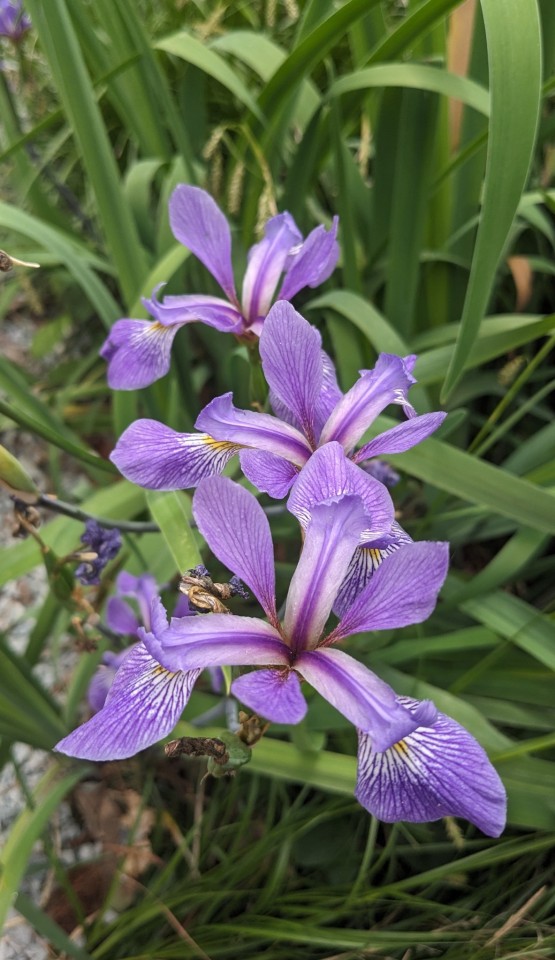
Iris versicolor / Harlequin Blueflag at the Sarah P. Duke Gardens at Duke University in Durham, NC
#Iris versicolor#Iris#Iridaceae#Harlequin blueflag#Blue flag#Larger blue flag#Northern blue flag#Poison flag#Purple iris#Native plants#Native flowers#Plants#Flowers#nature photography#photographers on tumblr#Sarah P. Duke Gardens#Duke Gardens#Duke University#Durham#Durham NC#North Carolina#🌺🌻
0 notes
Text
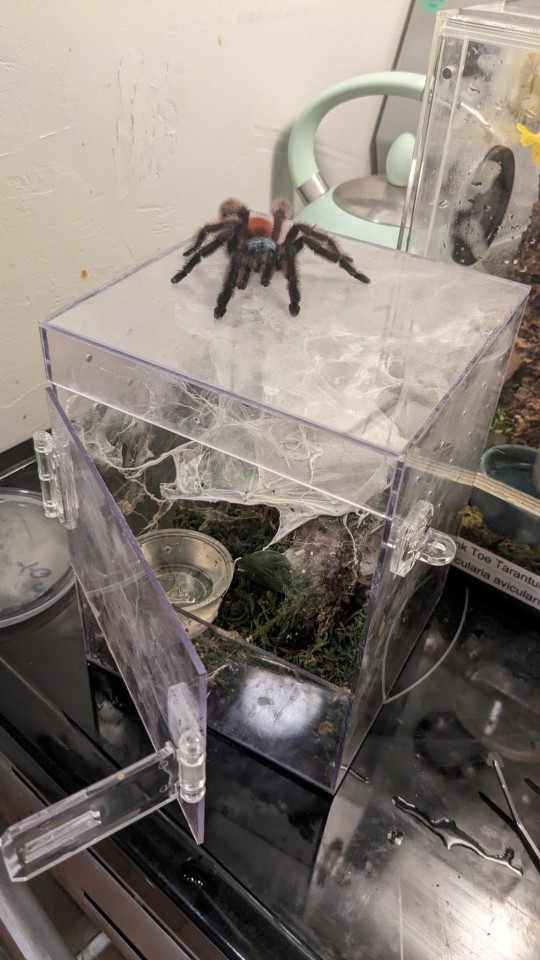
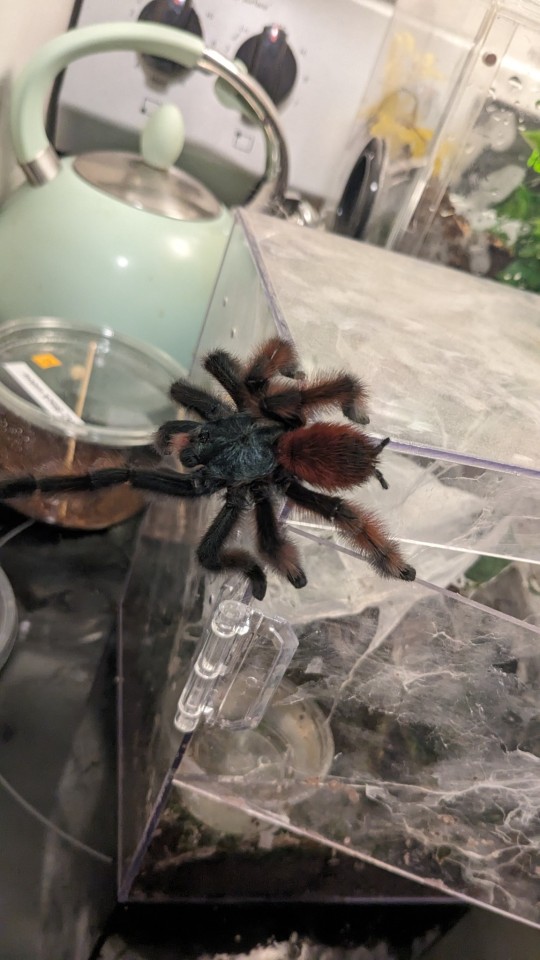
spot what's wrong with these pictures!!
#hint look at the big boy tarantula deciding he feels like exploring#his name is iris btw and hes very pretty#spiders#c. versicolor#she speaks
12 notes
·
View notes
Text
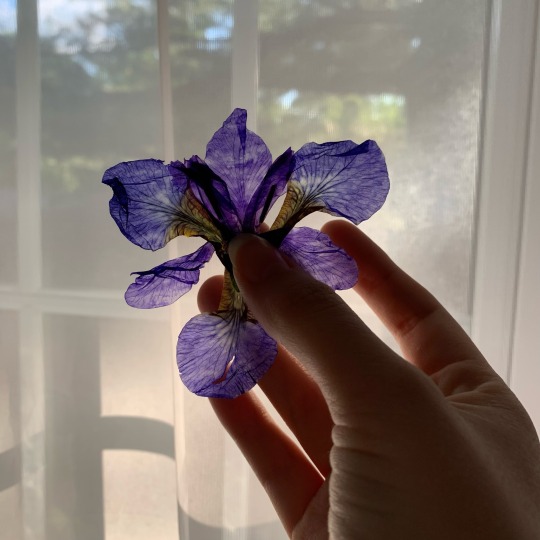

Pressed Iris Flower
2 notes
·
View notes
Text
alright there buckaroos we're gonna learn you something about machine learning and data science
This is a versicolor iris
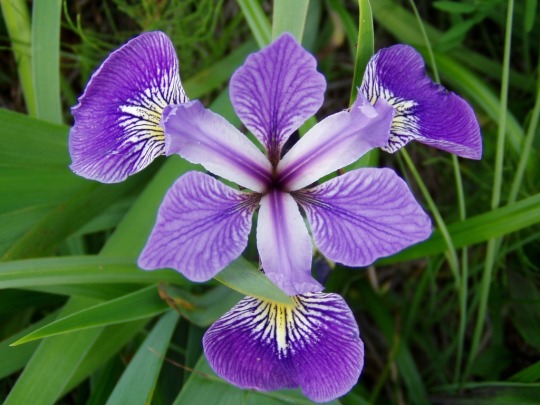
This is a virginica iris

Now you should be able to understand data science.
34 notes
·
View notes
Text
OC MOOD BOARD GAME

Thank you for tagging me @leopard-skin-pillbox-hat-ok 🙈❤️ Anyone who has an OC and this post is in your feed, consider yourselves as tagged!! (Format at the bottom)
OC: Elaine Byrne
Animal: Cat
Place: Brooklyn, New York (her hometown)
Plant: Iris versicolor
Character: Renate Reinsve (The Worst Person in the World)
Season: Autumn
Hobby: Walking around
Color: this shade of blue (navy? yves klein?)
Crystal: Citrine (her birth stone!)
Food: Sandwiches

4 notes
·
View notes
Text
[CM] - Flowering Plants 1
More lexicon posts, woohoo! Today I've got some flowering plants. This isn't the full list, but it's the ones I've assigned words so far, so it'll have to do until I work on more.
New york aster (Symphyotrichum novi-belgii) - Palefi
Derived from base Clanmew palifuh* (purple) and pfefi* (fluff petal). Tall, thin-stemmed plant with narrow leaves and pale purple flowers. Grows on marshland borders and may be found in nutritionally poor soil. Attractive to butterflies, moths, and bees!
Bog aster (Oclemena nemoralis) - Oskfi
Derived from palefi and osk* (white). Very similar to palefi, but a little smaller and with pale, pink-or-white flowers. Found in wetlands and on shores.
Bog goldenrod (Solidago uliginosa) - Morree
Derived from waymor* (taller than it is wide) and rreen* (golden). Very tall with a thin, reddish stem and fluffy golden flowers that bloom in late summer. Grows in wetlands and on shores. Resistant to deer and attractive to butterflies.
Water hemlock (Cicuta maculata) - Mwrai
Branched plant with clusters of tiny white flowers and deeply-toothed leaves. Grows in marshes and on shores. Mwrai is highly toxic! Consumption results in tremors, extreme pain, fever, and death. Mwrai is especially dangerous due to its resemblance to the herbs boneset and valerian.
Blueflag iris (Iris versicolor) - Pail
Derived from palifuh* (purple) and pai* (petal). Thick-leaved plant with fancy blue-to-purple flowers. Found in marshes, fields, and on shores. Though beautiful, pail is irritating when handled, and ingestion results in stomach upset.
Fragrant water-lily (Nymphea odorata) - Ssoskai
Derived from osk* (white), pai* (petal), and yasschoop* (sense of smell). Leaves are wide and float on the water; flowers are ornate, white with a yellow center, and bloom from morning til noon during warm months. Ssoskai are found exclusively on the lake. Flowers carry a sweet scent that may be detected hundreds of yards away!
Wild sarsaparilla (Aralia nudicaulis) - Sikibow
Cat-sized plant with tiny white flowers in spherical clusters; these flowers develop into dark berries in mid-summer. Grows in forest understories. Browsed by deer and moose, while the berries are consumed by foxes and chipmunks.
Sheep laurel (Kalmia angustifolia) - Besskaf
Derived from beka* (pink), peske* (clusters of flowers), and mwssaf* (poisonous). Shrub with thick, leathery leaves and circular pink flowers. Grows in wetlands, forests, and on shores. Besskaf is highly toxic to cats and also exudes chemicals that inhibit other plants, particularly conifers.
Northern St. John's-wort (Hypericum boreale) - Mwurfs
Leafy, shrubby plant with fancy yellow flowers. Found in wetlands, on shores, and in shallow lake water. Mwurfs is toxic - contact may result in boils and irritation, while consumption leads to photosensitivity, drooling, and depression.
Red clover (Trifolium pratense) - Shuf
Tiny spreading plant with little pink-or-red flowers. Grows in fields and on shores. Shuf is an herb that aids skin inflammation and (possibly) arthritis! It's also consumed by numerous animals.
6 notes
·
View notes
Photo
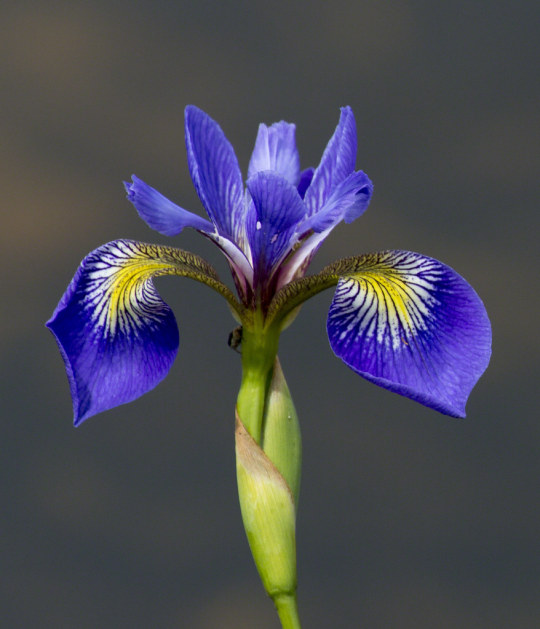
Iris versicolor (harlequin blueflag) by Bugbait of Seney https://flic.kr/p/ceHp8u
33 notes
·
View notes
Text
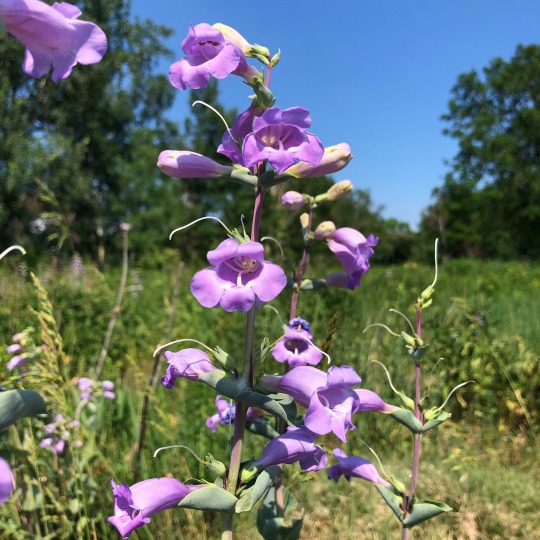




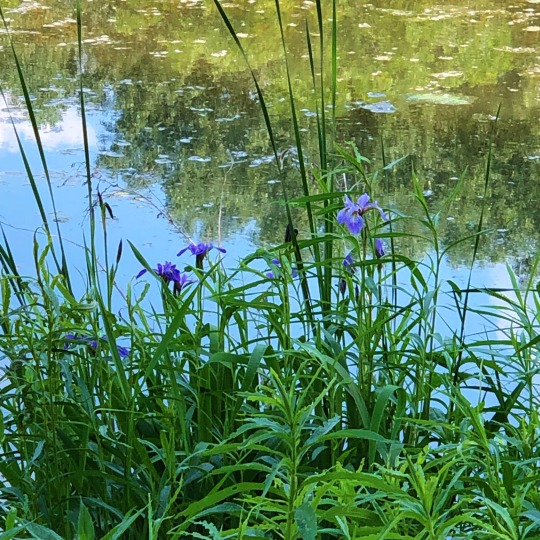
Penstemon grandiflorus (Large beardtongue)
Tradescantia ohiensis (Ohio spiderwort)
Vicia villosa (Hairy vetch)
Iris versicolor (Harlequin blueflag)
3 notes
·
View notes
Text
Power of Homeopathy as an Effective Treatment for Migraine

Millions of individuals worldwide suffer from the frequent neurological ailment known as migraines. Migraine is a condition that causes severe headaches, nausea, and light sensitivity that can last anywhere from a few minutes to days. A person's quality of life may be negatively impacted by the debilitating nature of migraine headaches and their potential to interfere with daily activities. Even though homeopathy is an alternative therapy, traditional medicine provides several migraine remedies, such as painkillers and prophylactic drugs. Homoeopathy is a type of complementary medicine that stimulates the body's own healing mechanisms by using greatly diluted natural chemicals. Homoeopathy has been used as an alternative medicine for over 200 years.
Homoeopathy for Migraine
Homoeopathy is a well-liked complementary treatment for migraines. Among the homoeopathic migraine treatments are Natrum muriaticum, Bryonia, Iris versicolor, and Belladonna. These treatments are thought to function by bringing the body's own energy into balance, lowering inflammation, and enhancing blood flow.
One benefit of using homoeopathy for migraines is that it doesn't have the potential side effects of using painkillers and anti-inflammatory drugs, which are common traditional migraine remedies. When administered as prescribed, homoeopathic medications are generally safe, though some patients may develop allergic responses or other negative effects.
There isn't enough data to say whether homoeopathy works to cure migraines, according to a review of clinical trials on the subject that has been released in the Cochrane Database of Systematic Reviews. The general caliber of the data is regarded as being low, despite the fact that certain individual research has shown encouraging results. To evaluate whether homoeopathy is useful for treating migraines, more research is required.
Types of Migraine:
There are two main forms of migraine.
Auratic migraine
Classical migraine is another name for migraine with aura. In this form, a feeling of aura (neurological symptoms) such as visual disturbance, hemisensory complaints, hemiparesis, or dysphasia frequently precede the attack. Most often, a visual aura is present. The aura often lasts a maximum of sixty minutes and develops over a period of 5 to 20 minutes. A headache, feeling of unwellness, and/or photophobia accompany it. The agonizing headache could persist for four to seventy-two hours.
Migraine without an aura
Ninety percent of migraine sufferers in women have this type of migraine, making it the most prevalent. This form of headache does not have an aura and only happens in episodes. An emotional condition, such as tension, euphoria, or any intense light or odor, may be the source of the headache. The headache primarily affects one side and gradually gets worse. The headache is frequently accompanied by nausea, vomiting, food intolerance, or sensitivity to bright lights and strong odors.
Prevalence of Migraine:
Females are more likely than males to experience migraines, with a male to female ratio of 1:3. Ninety percent of migraineurs have a family history of the condition. As people get older, migraine attacks become less common.
What Causes Migraines?
Genetic Propensity
High Oestrogen Levels
Sleep Deprivation
Emotional Strain
Noxious Odors
Migraine Symptoms:
Migraine Symptoms Without An Aura
The sort of vascular headache that occurs the most frequently is a migraine without aura. Moderate to severe headaches, a pulsating quality, a unilateral location, worsening by climbing stairs or engaging in other common activities, nausea and/or vomit, photophobia and phonophobia, and repeated attacks, each ranging 4 to 72 hours, are among the symptoms.
Migraine With Auratic Symptoms
The premonitory symptoms of headache can include motor, sensory, or visual complaints. Most victims have stated that visual problems are the most prevalent. Headache, feeling dizzy, and photophobia follow the aura.
Homoeopathic Migraine Treatments
Belladonna
A popular homoeopathic treatment for migraines is belladonna. The deadly nightshade plant's byproduct, belladonna, is said to have anti-inflammatory and blood flow-improving properties. Migraines with throbbing discomfort, redness, and heat are frequently treated with belladonna.
Bryonia
A typical homoeopathic treatment for migraines is bryonia. Bryonia, which is produced by the white bryony plant, is thought to function by easing pain and promoting blood flow. When a migraine occurs accompanied by a monotonous, throbbing pain that gets worse with movement, bryonia is frequently prescribed.
Versicolor iris
Homoeopathic treatment for migraines that is frequently used is iris versicolor. Iris versicolor, which comes from the blue flag plant, is thought to have anti-inflammatory and blood-flow-improving properties. Iris versicolor is frequently prescribed for migraines that come with severe, excruciating pain and nausea.
Muriatic natrum
A typical homoeopathic treatment for migraines is natrum muriaticum. Natrum muriaticum, which is made from sea salt, is thought to act by easing inflammation and enhancing blood circulation. Natrum muriaticum is frequently prescribed for migraines that come with throbbing pain and susceptibility to light.
Conclusion
There are generally no risks associated with using homoeopathy to treat migraines, unlike conventional migraine treatments. While homoeopathy may offer some migraine patients some relief, it's vital to speak with a doctor before utilizing it as a therapy. To guarantee that you obtain the right care for your migraines, it is crucial that you see a doctor. Visit us and book an appointment now with Dr. Shubham Tiwary.
#homeopathy#homeopathy doctor#homeopathic medicines#homeopathy treatment#Homeopathic remedies#best homeopathy doctor near me#homeopathy doctor near me#homeopathy near me#consult a doctor
2 notes
·
View notes
Text
Exploring Homeopathic Solutions for Migraine Relief: Natural Remedies for Managing Migraine Symptoms
Are migraines disrupting your life? Discover the gentle yet effective approach of homeopathy for finding relief from migraine headaches and improving your quality of life.
Migraines are more than just headaches—they can be debilitating, with symptoms like severe pain, nausea, sensitivity to light and sound, and visual disturbances. Conventional treatments often focus on managing symptoms with painkillers, but homeopathy offers a holistic approach that aims to address the underlying causes of migraines.
Homeopathic remedies for migraines are chosen based on individual symptoms, triggers, and overall health. Some common remedies include:
1. Belladonna: For throbbing, pounding headaches that come on suddenly and worsen with light, noise, or movement.
2. Gelsemium: Helpful for migraines triggered by anticipation or excitement, with a heavy, droopy feeling in the eyelids.
3. Iris versicolor: Indicated for migraines accompanied by nausea, vomiting, and visual disturbances, often with a sensation of a tight band around the head.
4. Natrium muriaticum: Suitable for migraines triggered by grief, stress, or emotional upset, with a pounding headache and sensitivity to light.
5. Sanguinaria: Used for migraines that start on the right side of the head and may be associated with nausea, vomiting, and visual disturbances.
In addition to these remedies, lifestyle modifications and stress management techniques can also play a significant role in preventing and managing migraines. Practicing relaxation techniques, maintaining regular sleep patterns, staying hydrated, and identifying and avoiding triggers can all help reduce the frequency and severity of migraines.
Homeopathy takes a personalized approach to treatment, so it's essential to consult with a qualified homeopathic practitioner to find the best remedy for your unique symptoms and needs. They will take into account your individual constitution, triggers, and overall health to prescribe the most appropriate remedy for you.
Don't let migraines control your life. Explore the gentle yet effective approach of homeopathy and take back control of your health and well-being.
[Disclaimer: Always consult with a qualified healthcare professional before starting any new treatment regimen, including homeopathy, especially if you have underlying health conditions or are pregnant or breastfeeding.]
Choose Homoeopathy for your better health.
@drpurishomoeopathy
For consultation contact us at
📞 +91-7814029176
✉️[email protected] (mailto:[email protected])
http://www.drpurishomoeopathy.com (http://www.drpurishomoeopathy.com)
"WE INSPIRE HOPE"
.
.
.
#doctor #homoeopathy #homeopathic #alternative #holistichealth #cure #health #drpurishomoeopathy
#Weinspirehope #hope #migraine #instagood #medicine #chandigarh #skincare #healthylifestyle #instalike #instagram #diettips #viral #viralmemes #headache #india #viralinstagram #healthjourney #healthyfood #chandigarh #mentalhealth #cervical #onlineconsultation
0 notes
Text
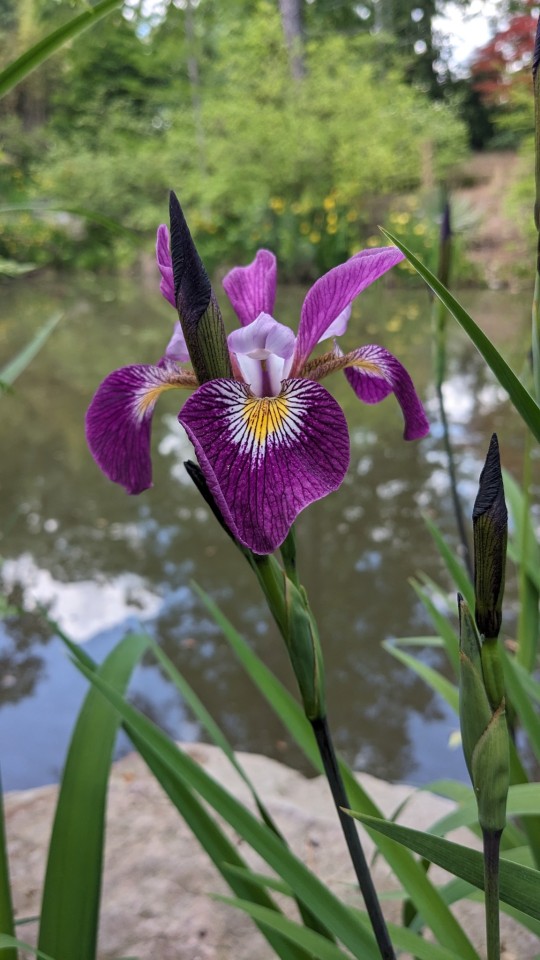
Iris versicolor 'John Wood' / 'John Wood' Blue Flag Iris at the Sarah P. Duke Gardens at Duke University in Durham, NC
#Iris versicolor 'John Wood'#Iris versicolor#Iris#Iridaceae#John Wood blue flag iris#Blue flag iris#blue flag#Poison flag#Harlequin blueflag#Purple iris#Plants#Flowers#Nature photography#photographers on tumblr#Sarah P. Duke Gardens#Duke Gardens#Duke University#Durham#Durham NC#🌺🌻
1 note
·
View note
Text
SBL Nixocid is a homeopathic medicine used to alleviate symptoms associated with acid reflux, such as heartburn, indigestion, and acidity. Its formulation comprises natural ingredients, including Carbo vegetabilis, Natrum phosphoricum, Robinia pseudoacacia, and Iris versicolor, known for their potential in managing digestive discomforts.
To effectively use SBL Nixocid for acid reflux relief, follow these guidelines:
Dosage: It's recommended to take SBL Nixocid in tablet form, typically 2 tablets three times a day before meals. However, it's crucial to consult a healthcare professional or follow the dosage instructions provided on the packaging for accurate intake specific to your condition.
Administration: The tablets should be taken orally and allowed to dissolve under the tongue or chewed before swallowing. Avoid eating or drinking anything at least 30 minutes before and after taking the tablets to ensure proper absorption.
Consistency: For optimal results, maintain regularity in taking the medication as directed. Consistent usage over a prescribed period may be necessary to experience significant relief from acid reflux symptoms.
Dietary and Lifestyle Adjustments: While using SBL Nixocid, consider making lifestyle changes that can help manage acid reflux. This includes avoiding spicy, acidic, or fatty foods, eating smaller meals, maintaining a healthy weight, avoiding lying down immediately after meals, and elevating your head while sleeping.
Consultation with Healthcare Provider: Before starting any new medication or treatment, it's crucial to consult a healthcare professional, especially if you have underlying health conditions, are pregnant, or are already taking other medications. They can provide personalized advice and ensure its compatibility with your health status.
Monitoring and Adjustment: Monitor your response to the medication. If you experience any adverse effects or if the symptoms persist or worsen, seek medical advice promptly. Your healthcare provider might adjust the dosage or recommend alternative treatments based on your individual needs.
SBL Nixocid, being a homeopathic remedy, aims to address acid reflux symptoms naturally. However, its efficacy can vary among individuals. Hence, it's essential to use it as directed and in conjunction with appropriate lifestyle modifications for better outcomes in managing acid reflux discomfort. Always consult a healthcare professional for personalized guidance and appropriate use.
0 notes